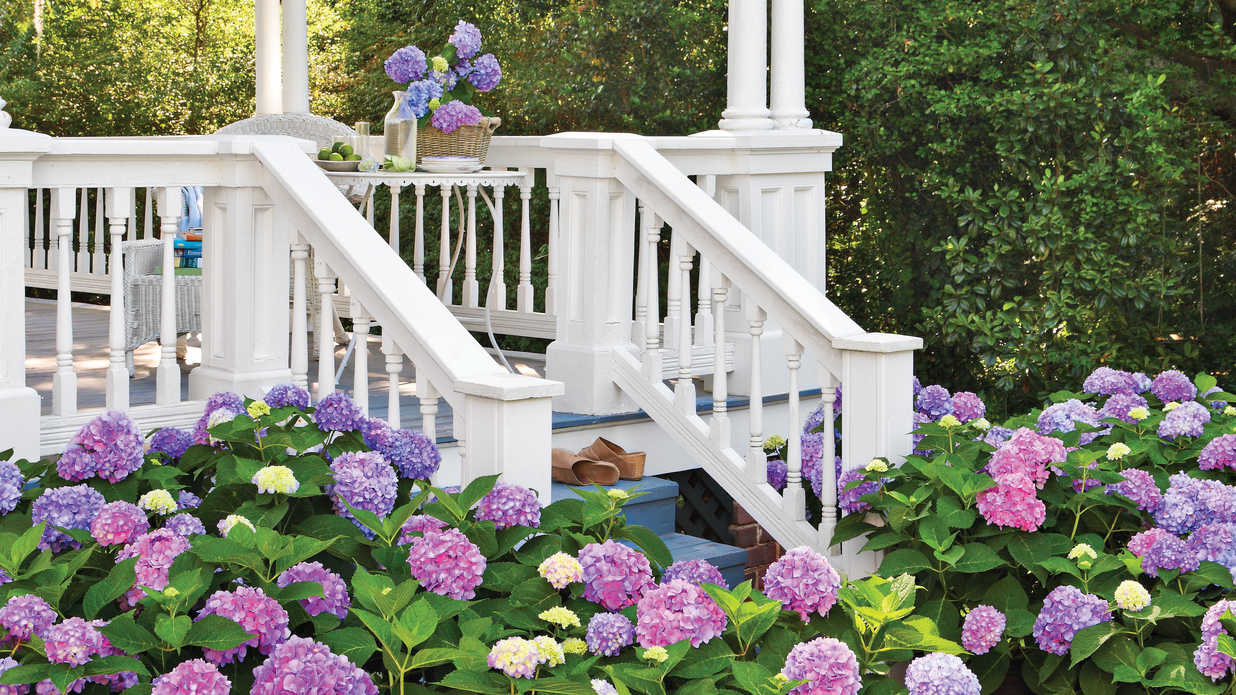
Hydrangeas – Plant – Grow – Care
When embarking on a landscape architecture exercise hydrangeas are a popular choice due to their captivating display of beautiful flowers and foliage.
Hydrangeas come in types that can flourish in sun or shade. They offer huge bouquets of clustered flowers, in various arrangements from mophead to lacecap from summer through fall. Varieties of hydrangea differ in size of plant and flower shape, flower color, and blooming time.
Although there are many types of hydrangeas, most can be grown in full sun or partial shade. Keep in mind, however, that many hydrangeas do not like extremely hot conditions, so try to locate them in an area where they can enjoy some afternoon shade. While they can be grown in a wide range of soils, hydrangeas typically prefer rich, moist soil that drains easily. Amending the soil with compost prior to planting could be helpful.
Hydrangea planting should be performed in spring once the threat of frost has passed. Water thoroughly after planting. You can also add a layer of mulch following hydrangea planting.
The colors of some hydrangeas—especially mophead and lacecap—can change color based on the soil pH, which affects relative availability of aluminum ions. Acidic soils with a pH of less than 5.5 produce blue flowers; soils with a pH greater than 5.5 product pink flowers. White flowers are not affected by pH.
PLANTING
- VERY IMPORTANT: Choose a location where your hydrangea can reach its full size without pruning. For normal sized hydrangeas, expect the plant to reach at least 4 ft. X 4 ft. Hydrangeas are almost impossible to keep pruned to a smaller size than they ultimately wish to grow.
They prefer full sun in the morning, with some afternoon shade; however, many will grow and bloom in partial shade. This is especially true for the bigleaf hydrangeas - The further north one lives the more sun hydrangeas need and can withstand. While mophead hydrangeas can grow well in all-day sun in Chicago, they would struggle to survive in afternoon sun in Atlanta.
- Plant in well-drained soil! If soil is heavy, add roughage such as pine bark mulch (Make sure it’s ground BARK not ground WOOD).
- Do not over water, esp. in clay soil. This can lead to root rot.
- Do not plant too deeply. Plant at the same depth the hydrangea was planted in the pot.
- Plant in early summer or fall.
- Transplant a hydrangea when it has become dormant and has lost all of its leaves (late fall or winter).
CARE
- For the first year or two after planting and during any drought, be sure hydrangeas get plenty of water. Leaves will wilt if the soil is too dry.
- If your soil is rich, you may not need to fertilize hydrangeas. If your soil is light or sandy, it’s best to feed the plants once a year in late winter or spring. Too much fertilizer encourages leafy growth at the expense of blooms.
- In the fall, cover plants to a depth of at least 18 inches with bark mulch, leaves, pine needles, or straw. If at all possible, cover the entire plant, tip included, by making cages out of snow fencing or chicken wire, and loosely filling the cages with leaves. (Do not use maple leaves, as they will break down too quickly.)
This is a very basic introductory guide for both Wauconda and Denver locations. Look for follow up articles on pruning, color change, drying, fertilizing, transplanting etc. etc.
Recent Articles
Greenwood Village Pool Removal
In this Greenwood Village Pool Removal the customer had an unusual request.He wanted the concrete po…
Centennial Pool Removal
In this Centennial Pool Removal we were approached by a realtor who introduced us to the client. Thi…
Boulder Colorado Pool Removal
With this Boulder Colorado Pool Removal project a repeating theme occurred. The customer made the de…





